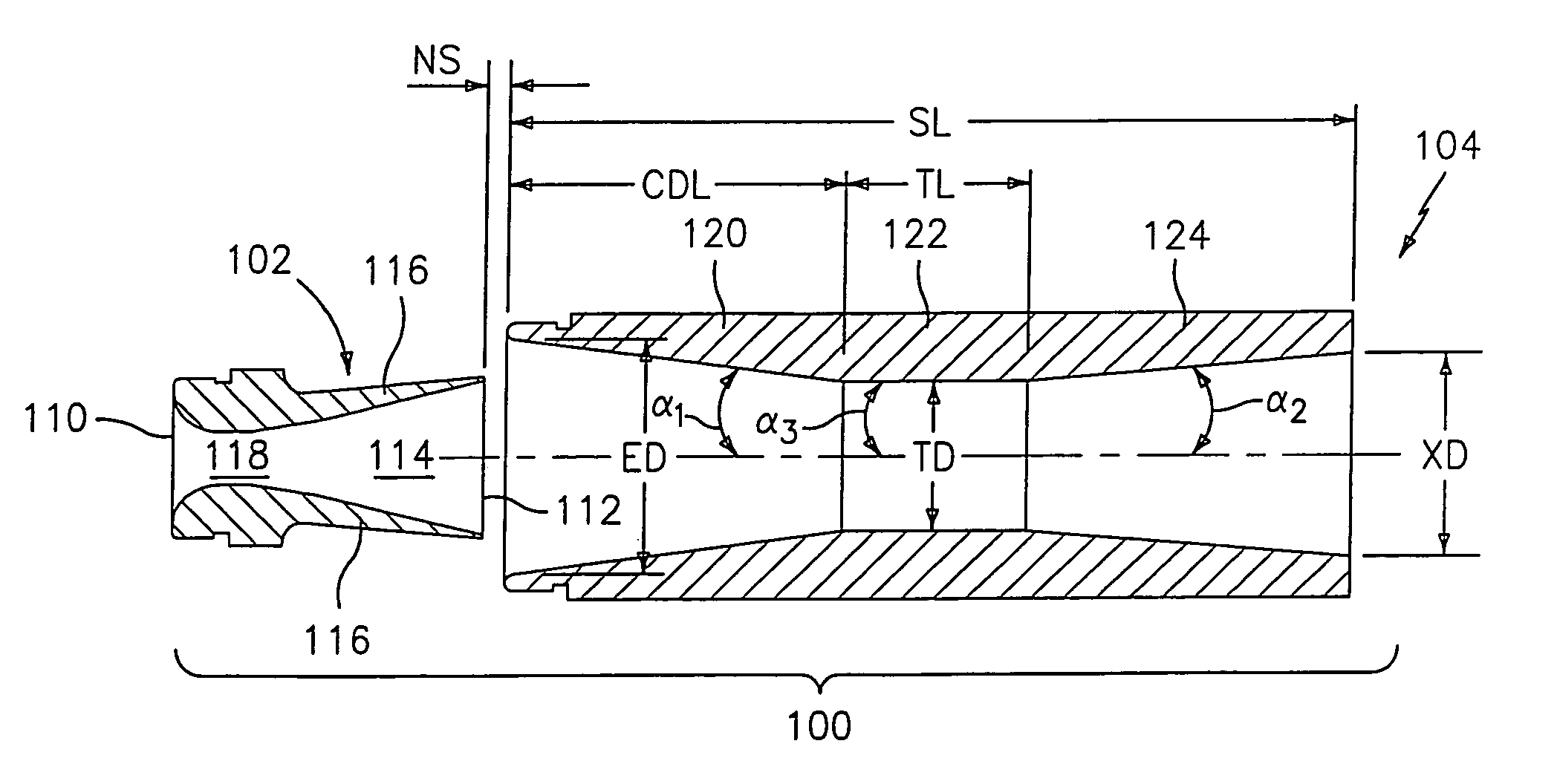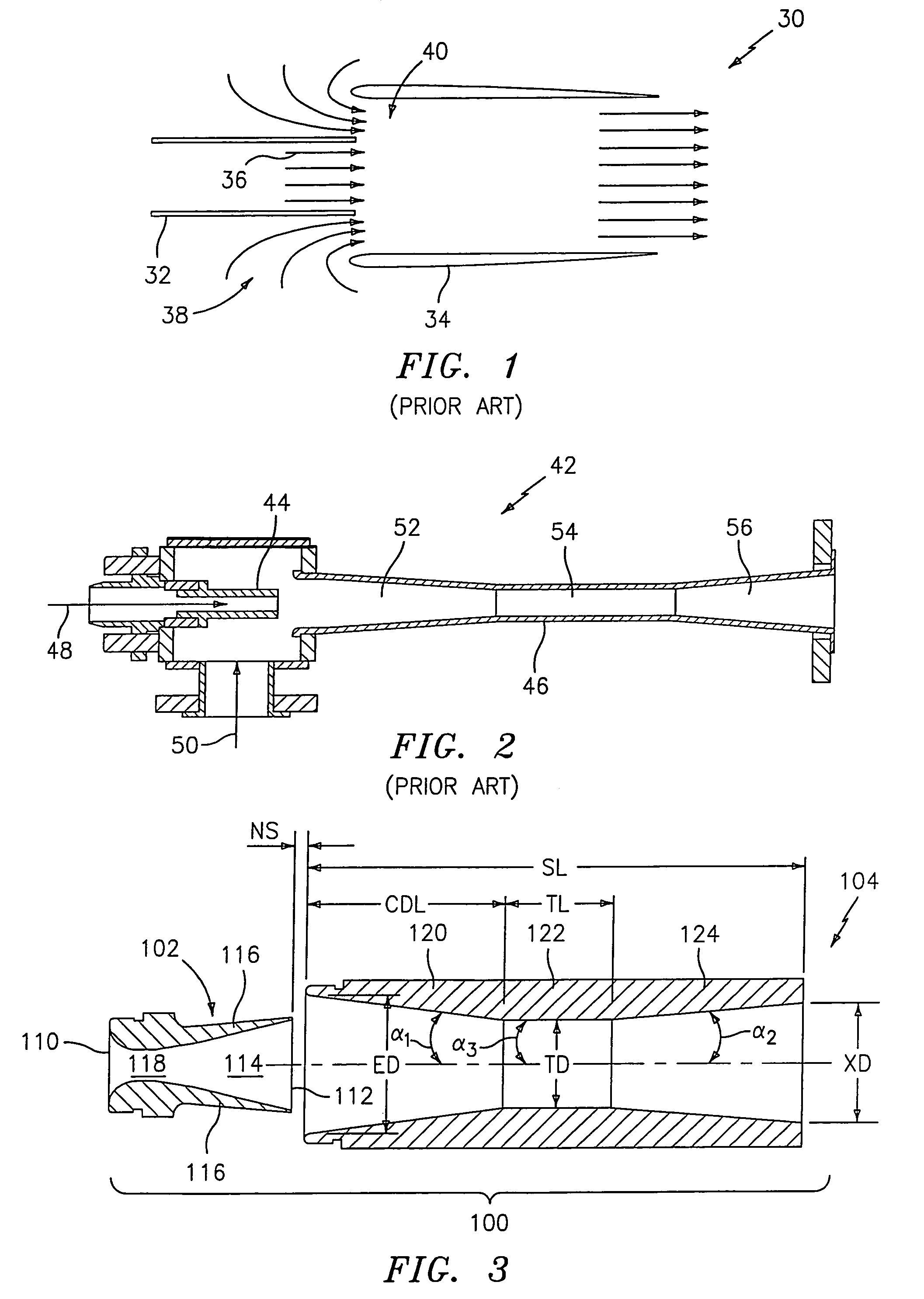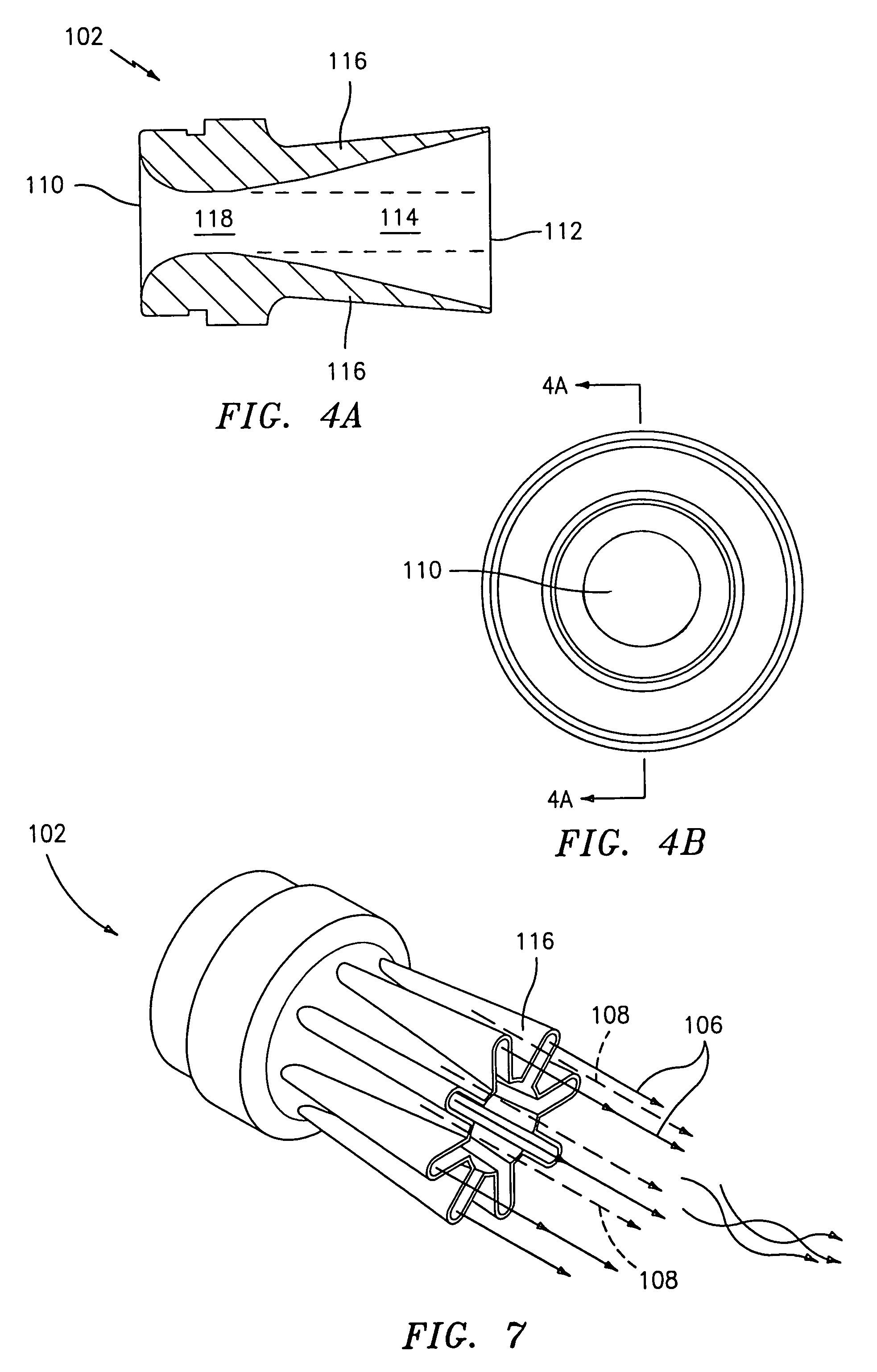Lobed convergent/divergent supersonic nozzle ejector system
a supersonic nozzle and ejector technology, applied in the direction of machines/engines, non-positive displacement pumps, jet pumps, etc., can solve the problems of high operational costs, high material and manufacturing costs, and high manufacturing costs, so as to increase the flow pressure, reduce energy loss, and increase suction performance
- Summary
- Abstract
- Description
- Claims
- Application Information
AI Technical Summary
Benefits of technology
Problems solved by technology
Method used
Image
Examples
Embodiment Construction
Turning now to FIGS. 3–10, various embodiments of a lobed, convergent / divergent, supersonic nozzle steam ejector or vacuum system 100 (hereinafter, “ejector system”), according to the present invention, will now be described. In a preferred embodiment, with reference to FIG. 3, the ejector system 100 comprises a lobed, supersonic primary nozzle 102 and a “shortened” convergent / divergent ejector shroud or diffuser 104 (by “shortened,” as discussed further below, it is meant that the shroud has a shroud-length-to-entrance-diameter (“SLED”) ratio significantly smaller than typical shrouds / diffusers, e.g., about 3.5 as compared to 10). The lobed nozzle 102 is positioned just upstream from the ejector shroud 104. In operation, a primary flow 106 of high-pressure steam or air is directed through the nozzle 102 and into the ejector shroud 104. The primary flow 106 entrains, or drags along, a secondary flow 108 as it enters the shroud. As it does so, the lobed nozzle 102 rapidly mixes the p...
PUM
 Login to View More
Login to View More Abstract
Description
Claims
Application Information
 Login to View More
Login to View More - R&D
- Intellectual Property
- Life Sciences
- Materials
- Tech Scout
- Unparalleled Data Quality
- Higher Quality Content
- 60% Fewer Hallucinations
Browse by: Latest US Patents, China's latest patents, Technical Efficacy Thesaurus, Application Domain, Technology Topic, Popular Technical Reports.
© 2025 PatSnap. All rights reserved.Legal|Privacy policy|Modern Slavery Act Transparency Statement|Sitemap|About US| Contact US: help@patsnap.com



